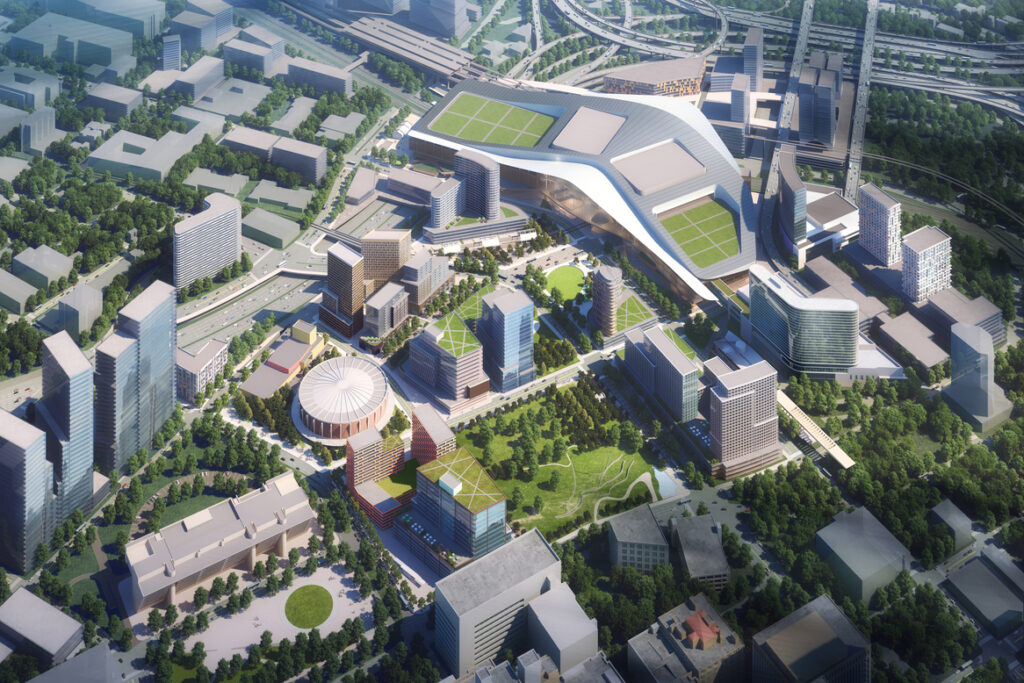The latest in The Real Estate Council’s Market Matters series featured a panel on the current state of the hospitality industry and future forecast at the Warwick Melrose Hotel in Oak Lawn. Panelists included Dupree Scovell, managing partner at Dallas-based Woodbine Development; Kevin Davis, chief executive officer of JLL Hotels & Hospitality, Americas; and John Bourret, managing director of Eastdil Secured. D CEO Editor Christine Perez moderated.
HALL Group leader and TREC Chairman Kim Butler gave opening remarks, praising North Texas despite current economic and market conditions. “Even with all the uncertainty in the world and in the economy, I don’t know about you, but there’s no place I’d rather be for what we do than Dallas, Texas,” Butler said to begin the event.
Panelists touched on rising interest rates, the return of business travel, increased debt prices, current transaction volume, and more. Here are some key highlights and takeaways from the event:
How has the hospitality industry fared post-COVID?
DAVIS: “The operating fundamentals over the past couple of years going back to the start of COVID have been challenged. 2021 and 2022 have been good recovery years, such that from a RevPAR (revenue per available room) basis, we are back up to beyond where we were in 2019, which is the benchmark that most hoteliers use to determine operating performance. We’re up about 5 percent on a RevPAR basis compared to 2019.
“From a transaction volume perspective, 2021 was the second largest transaction volume year for hospitality. To date, 2015 was the largest: 2015 was about 48 billion, and last year was about 40 billion. This is domestic, generally 25 million or larger. So far this year, for the end of July, we’re at about 23 billion, which for that time period is the highest it’s ever been. That’s up about 86 percent compared to 2019 in terms of transaction volume. A lot of trades are happening, and a couple of large portfolio deals have gotten done…Interestingly, there have been a record number of single asset or individual trades. It’s been about 750 individual trades through the end of July.
“Looking forward, in addition to what’s going on with the Fed and interest rates, transaction volume has started to slump over the past couple of months. We’re still seeing strong operating performance, but the expectation is that, as we potentially move toward recession, we’ll see declining operating performance. Right now, it’s interesting. It’s a tale of two worlds because operating performance is generally very strong, but the capital markets are very challenged.”
How are rising interest rates impacting the industry, and what do you see going forward?
SCOVELL: “It’s a challenge, for sure, especially on the buy side. What our industry is dealing with that I think is unique is we just went through COVID, so you have a ton of liquidity that came into the market: You have a ton of people that have now raised funds, anticipating the stress during the pandemic that didn’t really happen.
“Then, when interest rates go up, the expectation now is that you’re going to start to see banks want to take assets back, but the reality is that no bank wants a hotel for one, but even if they do, there’s a floor that’s been created just by the amount of liquidity that’s coming on the market. Because there’s so much equity that’s been raised, it will create a floor that will set pricing above where the stress mark will come.
“The deals that are going to get done right now are going to be REITs—because they don’t need debt—and the sponsorship groups that are exceptional. They’re the ones that are going to be able to get debt in this type of market. But one way or the other, something’s got to give. If you’re underwriting an asset, CAPEX pricing and your pricing and renovation is going to be up by probably 20 percent. You’re going to have to underwrite some type of softening that’s happening over the course of the next year or two. It’s the only thing that gives us the returns. The reality is with the amount of equity that’s coming into the space, it has to be something where that equity is willing to say, ‘We’ll just take a lower return.’ I don’t see any other way to get there.”
How does hospitality in Dallas-Fort Worth and Texas at large stack up against other major markets?
BOURRET: “Most of the hotel REITs had kind of redlined Dallas until recently. They’re now looking and trying to find the one or two assets that will help get them back into this market. Austin is on every major investor’s radar. They all want a dot on the map. San Antonio has definitely benefited from the growth in Austin and is looked at as kind of a next-tier growth market in Texas. Unfortunately, Houston is still a little bit of a challenge, except for specific pockets. The Woodlands is actually performing phenomenally, and other places where some of these micro markets in Houston are actually much better. But the overall market is just painted with this brush that institutions are not wanting to jump back into the market. Texas is a great place to be right now, especially in the hotel space.”
What is happening in development within hospitality?
SCOVELL: “What’s going on near Frisco is the land prices have not doubled but tripled. In other forms of real estate, because of rent growth, you can control that. In hotels, that’s a little bit harder because you have seen a lag in RevPAR growth. It is just now starting to really ramp up.
“When you’re trying to develop a hotel, and prices are going up 20 percent, and interest rates have now gone from 3 percent to 6.5 percent, that becomes a real challenge to make development work. I think it’s a pretty simple equation. Either you’re willing to accept a lower return and develop, which I think in most cases is what’s happening for developers. That’s where you make your money and how you keep the lights on. At the end of the day, you just have to say, ‘Risk-adjusted for us is a little bit different than what that risk-adjusted return might be for someone else.’
“At Woodbine, we say we’re going to keep developing. We have three projects that will start over the course of the next 12 months in the development space. One we started maybe a month ago in San Antonio at Hyatt Hill Country. We’re doing a $90 million renovation on that asset. It was like you’re looking at all the metrics from a macro perspective, and you said, ‘Okay, what’s going to happen?’ Of course, in the next few years, if there were ever a time I wanted to be under construction, it’d be right now. So we look at it and say ‘We build the balance sheet to be able to develop whether we are in a great market or whether we are in a bad market.’
“For us, it’s one foot in front of the other a little bit with blinders on, but we’re just going to keep marching ahead. That gives us a competitive advantage when the large majority of developers are saying, ‘We can’t get it done.’ There’s not equity that’s going to accept those little returns. Debt guys are pulling back on 65 to 55 percent. Ideally, that puts us in a position on the other end of this, whenever that is, where we’ve got new product. That historically has been a winning strategy for us, where supply is going to be muted, and then you’re the last man standing.”
What is attracting the most interest in development?
BOURRET: “From the institutional world, there’s very little appetite to do development today. Equity for development is predominantly in the select service space, and it’s mostly on the private side. Phenomenal firms of great reputation, like Woodbine, can still go out and get construction financing. That market is probably much easier than the equity market.
“The development market is more than just land bases. You have to pick your spot, and you have to know about accessibility with traffic patterns. How somebody gets going to get in and out of there and have that be a pleasant experience? Then, once they get there, what amenities are you offering?… It’s tough. It’s not for the faint of heart. The guys who do it well, I think they’re really rising to the top.”
Author







